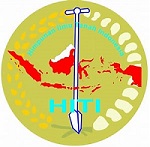KAJIAN PERSEBARAN RUANG TERBUKA HIJAU DI KECAMATAN MALALAYANG KOTA MANADO
DOI:
https://doi.org/10.35791/se.21.3.2021.38766Keywords:
Ruang Terbuka Hijau, Green open space, rencana tata ruang, spatial plans, Kecamatan Malalayang, Malalayang District.Abstract
STUDY OF GREEN OPEN SPACE DISTRIBUTION ON MALALAYANG DISTRICT MANADO CITY
This research is intended to know if the distribution and availability of GOS in Manado City are corresponding to the spatial plans. The method used in this research is descriptive comparative. The data on the distribution of green open space was obtained through a comparison of the Manado City Land Use Map which was readjusted on Worldview 2 (2015) satellite imagery with the Manado City Spatial Plan Map, especially in Malalayang District based on the classification of green open space types. While the data on the availability of green open space is obtained from the comparison of the total area of the existing green open space in the district of Malalayang. The results showed that the existing green open space in Malalayang District was 123.80 ha. However, the existing green open space area still has to be added to an area of 342.91 ha because it has not met the planned target. Based on the population, the availability of RTH Taman Kelurahan in Malalayang sub-district has been met with an area of 5.05 m²/capita, while the availability of RTH for burial areas has not been met with an existing area of 0.4 m²/capita while what should be available is 1.2 m²/capita.
Downloads
How to Cite
Issue
Section
License
Authors who publish in this journal agree to the following terms:
Authors hold their copyright and grant this journal the privilege of first publication, with the work simultaneously licensed under a Creative Commons Attribution License that permits others to impart the work with an acknowledgment of the work's origin and initial publication by this journal.
Authors can enter into separate or additional contractual arrangements for the non-exclusive distribution of the journal's published version of the work (for example, post it to an institutional repository or publish it in a book), with an acknowledgment of its underlying publication in this journal.
Authors are permitted and encouraged to post their work online (for example, in institutional repositories or on their website) as it can lead to productive exchanges, as well as earlier and greater citation of the published work (See The Effect of Open Access).




